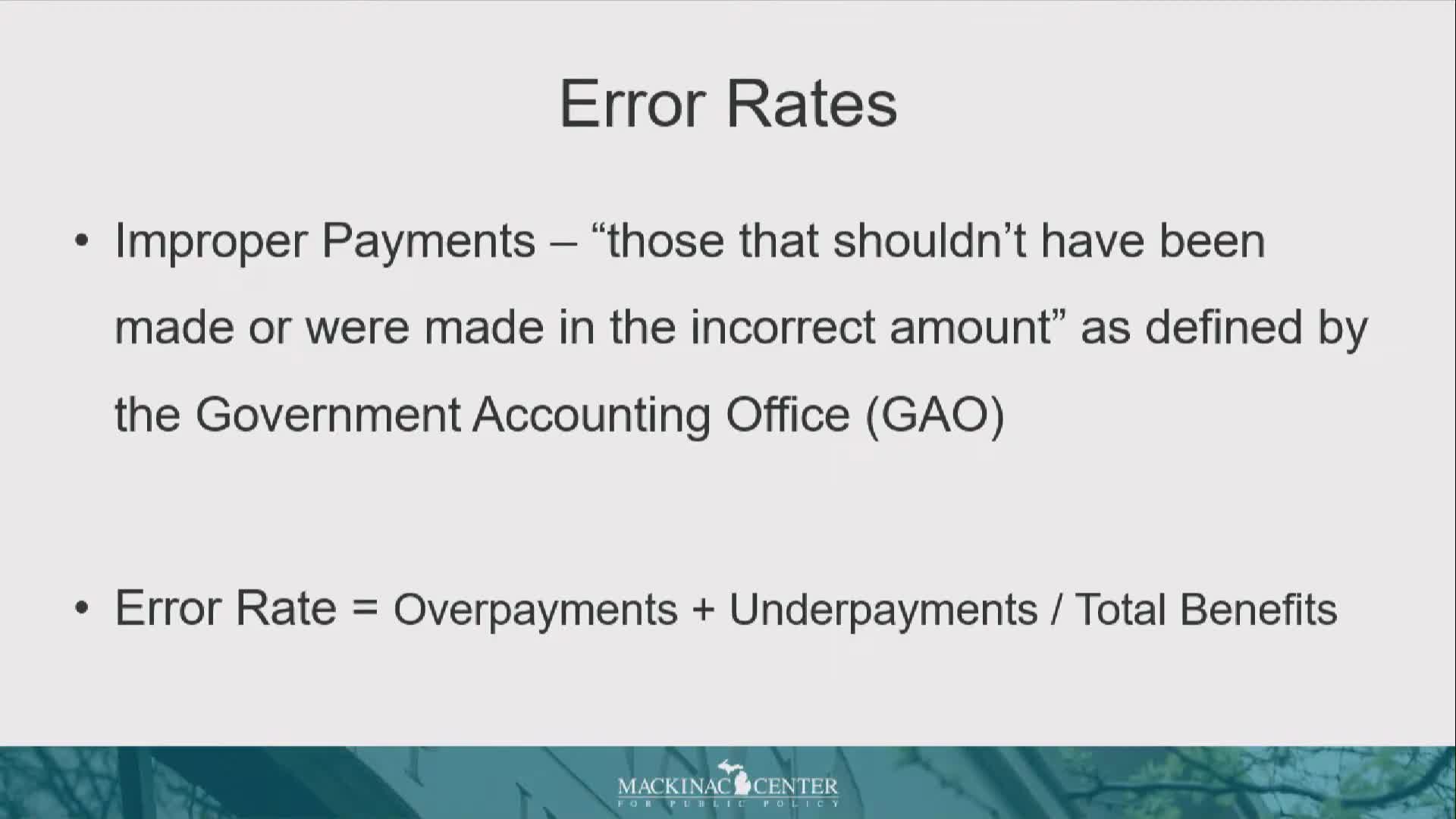OBAA Implements New SNAP Funding Structure Amid Rising Error Rates Nationwide
September 19, 2025 | 2025 House Legislature MI, Michigan
This article was created by AI summarizing key points discussed. AI makes mistakes, so for full details and context, please refer to the video of the full meeting. Please report any errors so we can fix them. Report an error »

The Oversight Subcommittee on State and Local Public Assistance Programs convened on September 18, 2025, to discuss significant changes to the Supplemental Nutrition Assistance Program (SNAP) and its implications for states. A key focus of the meeting was the new error rate guidelines established by the federal government, which will impact funding and compliance for states administering SNAP benefits.
For the first time, the federal government will not cover 100% of the costs associated with SNAP if a state's error rate exceeds 6%. This 6% threshold is not new; it has been a guideline since the late 1970s and has been reinforced through various funding and penalty measures over the decades. Currently, only eight states are compliant with this guideline, with a few others hovering just above the threshold.
In addition to the error rate changes, the cost-sharing structure for administering SNAP will shift significantly. States will now be required to cover 75% of the program's costs, while the federal government will contribute only 25%. This change is expected to place additional financial pressure on state budgets.
The process for calculating the error rate involves monthly data collection and quality control reviews conducted by state agencies. These reviews assess the accuracy of benefit determinations by interviewing recipients and matching their reported information against initial eligibility criteria. Following this, the federal government conducts its own checks on a sample of cases to finalize the error rate.
It is important to note that the federal government only considers payments that exceed a $57 threshold when determining improper payments. This means that minor discrepancies in benefit amounts may not be counted against a state's error rate, which could affect overall compliance assessments.
The discussions at the meeting highlighted the ongoing challenges states face in managing SNAP effectively while adhering to federal guidelines. As states prepare for these changes, the implications for public assistance programs and the populations they serve will be closely monitored in the coming fiscal year.
For the first time, the federal government will not cover 100% of the costs associated with SNAP if a state's error rate exceeds 6%. This 6% threshold is not new; it has been a guideline since the late 1970s and has been reinforced through various funding and penalty measures over the decades. Currently, only eight states are compliant with this guideline, with a few others hovering just above the threshold.
In addition to the error rate changes, the cost-sharing structure for administering SNAP will shift significantly. States will now be required to cover 75% of the program's costs, while the federal government will contribute only 25%. This change is expected to place additional financial pressure on state budgets.
The process for calculating the error rate involves monthly data collection and quality control reviews conducted by state agencies. These reviews assess the accuracy of benefit determinations by interviewing recipients and matching their reported information against initial eligibility criteria. Following this, the federal government conducts its own checks on a sample of cases to finalize the error rate.
It is important to note that the federal government only considers payments that exceed a $57 threshold when determining improper payments. This means that minor discrepancies in benefit amounts may not be counted against a state's error rate, which could affect overall compliance assessments.
The discussions at the meeting highlighted the ongoing challenges states face in managing SNAP effectively while adhering to federal guidelines. As states prepare for these changes, the implications for public assistance programs and the populations they serve will be closely monitored in the coming fiscal year.
View full meeting
This article is based on a recent meeting—watch the full video and explore the complete transcript for deeper insights into the discussion.
View full meeting
